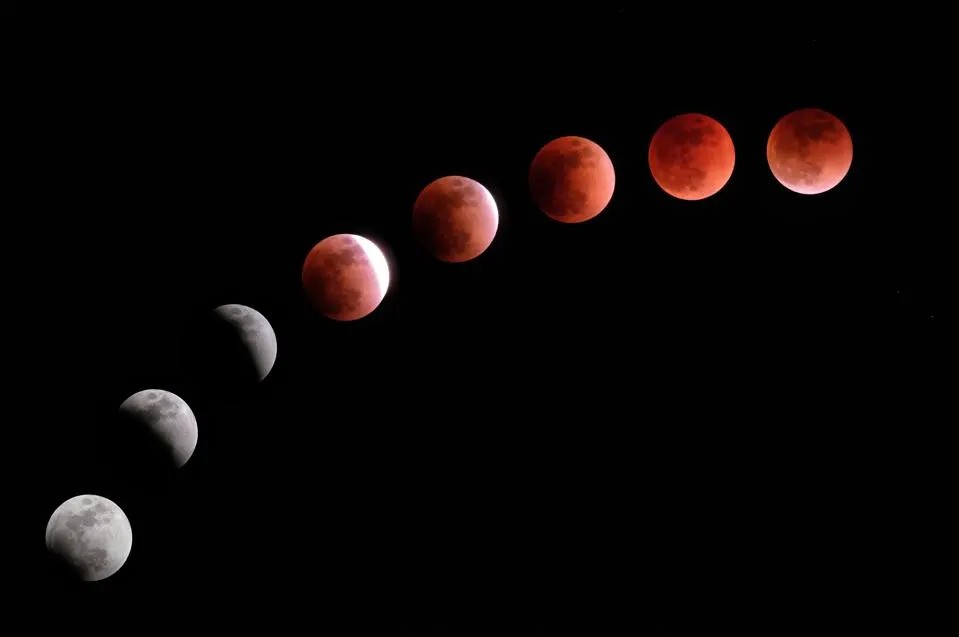The next blood moon, also known as a total lunar eclipse, is a rare and awe-inspiring event that captures the attention of people all over the world. This celestial phenomenon occurs when the Earth passes between the sun and the moon, casting a shadow on the moon and giving it a reddish hue. Many cultures and religions have attached significance to the blood moon, making it a topic of fascination and curiosity. In this article, we will explore the when, why, and how of the next blood moon, and delve into its cultural and spiritual significance.
The Science Behind the Next Blood Moon
What Causes a Blood Moon?
A blood moon occurs during a total lunar eclipse, which happens when the Earth's shadow falls on the moon. This can only happen during a full moon, when the sun, Earth, and moon are aligned in a straight line. As the moon moves into the Earth's shadow, it takes on a reddish hue due to the scattering of sunlight through the Earth's atmosphere. This gives the moon its characteristic "blood" color, hence the name "blood moon."

How Often Does a Blood Moon Occur?
Total lunar eclipses are not as common as one might think. On average, they occur about twice a year, but the frequency can vary. For example, there were no total lunar eclipses in 2018, while there were three in 2020. However, not all of these eclipses will result in a blood moon. It depends on the alignment of the Earth, sun, and moon, and the angle at which the moon enters the Earth's shadow.
Predicting the Next Blood Moon
Predicting the exact date and time of the next blood moon can be tricky, as it depends on various factors such as the Earth's orbit and the position of the moon. However, scientists and astronomers have developed sophisticated tools and techniques to accurately predict when a blood moon will occur. These predictions are usually made several years in advance, giving people ample time to plan and witness this spectacular event.
Cultural and Spiritual Significance of the Next Blood Moon
The Blood Moon in Different Cultures
The blood moon has been a source of fascination and wonder for many cultures throughout history. In ancient times, people believed that a blood moon was a sign of impending doom or a message from the gods. In some cultures, it was seen as a symbol of fertility and abundance. Today, many cultures still attach significance to the blood moon, with some viewing it as a time for reflection and spiritual growth.

How to Use the Next Blood Moon
The next blood moon presents a unique opportunity for people to connect with nature and the universe. Many people use this time to meditate, set intentions, and reflect on their lives. Some also perform rituals or ceremonies to honor the blood moon and its significance. Whatever your beliefs may be, the next blood moon is a chance to tap into your spirituality and connect with something greater than yourself.
Examples of the Next Blood Moon in History
Throughout history, there have been many notable blood moons that have captured the attention of people all over the world. One such example is the "Blood Moon Prophecy" of 2014-2015, which predicted a series of four consecutive blood moons, known as a tetrad. This event sparked a lot of interest and speculation, with some believing it to be a sign of the end times. While nothing catastrophic happened during this time, it did bring attention to the cultural and spiritual significance of the blood moon.
Comparisons: Blood Moon vs. Supermoon
Many people confuse the blood moon with the supermoon, another popular celestial event. However, these two phenomena are quite different. A supermoon occurs when the moon is at its closest point to Earth, making it appear larger and brighter than usual. On the other hand, a blood moon is a total lunar eclipse, which gives the moon a reddish hue. While both events are visually stunning, they have different scientific explanations and occur at different times.
Tips for Viewing the Next Blood Moon

If you're interested in witnessing the next blood moon, there are a few things you can do to ensure the best viewing experience. Firstly, check the predicted date and time of the eclipse in your area. Secondly, find a location with minimal light pollution, such as a park or open field. Lastly, make sure you have proper eye protection, as looking directly at the sun or moon during an eclipse can be harmful to your eyes.
FAQs about the Next Blood Moon
What is the difference between a partial and total lunar eclipse?
A partial lunar eclipse occurs when only a portion of the moon enters the Earth's shadow, while a total lunar eclipse occurs when the entire moon is covered by the Earth's shadow.
Can a blood moon be seen from anywhere on Earth?
Yes, a blood moon can be seen from any location on Earth where the moon is visible during the eclipse.
How long does a blood moon last?
The duration of a blood moon can vary, but on average, it lasts for about 3 hours.
Are there any health risks associated with viewing a blood moon?
Yes, looking directly at the sun or moon during an eclipse can cause damage to your eyes. It is important to use proper eye protection or view the eclipse indirectly through a pinhole projector.
Is there any spiritual significance to the blood moon?
Many cultures and religions attach spiritual significance to the blood moon, viewing it as a time for reflection, growth, and connection with the universe.
Conclusion: Witnessing the Next Blood Moon
In conclusion, the next blood moon is a rare and awe-inspiring event that has captured the attention of people throughout history. Whether you view it as a scientific phenomenon or a spiritual experience, there is no denying the beauty and significance of the blood moon. So mark your calendars and make sure to witness this celestial wonder when it occurs next.



